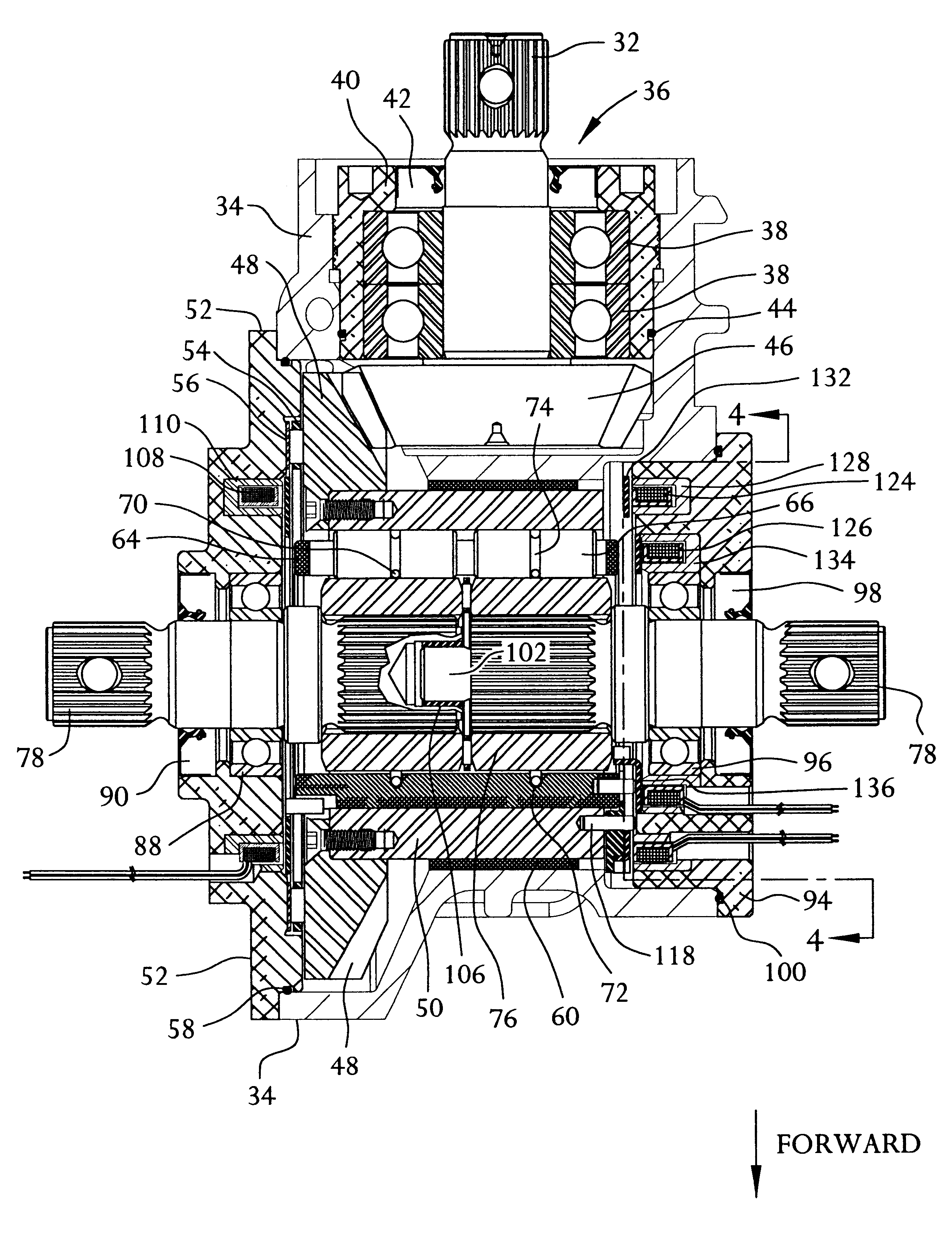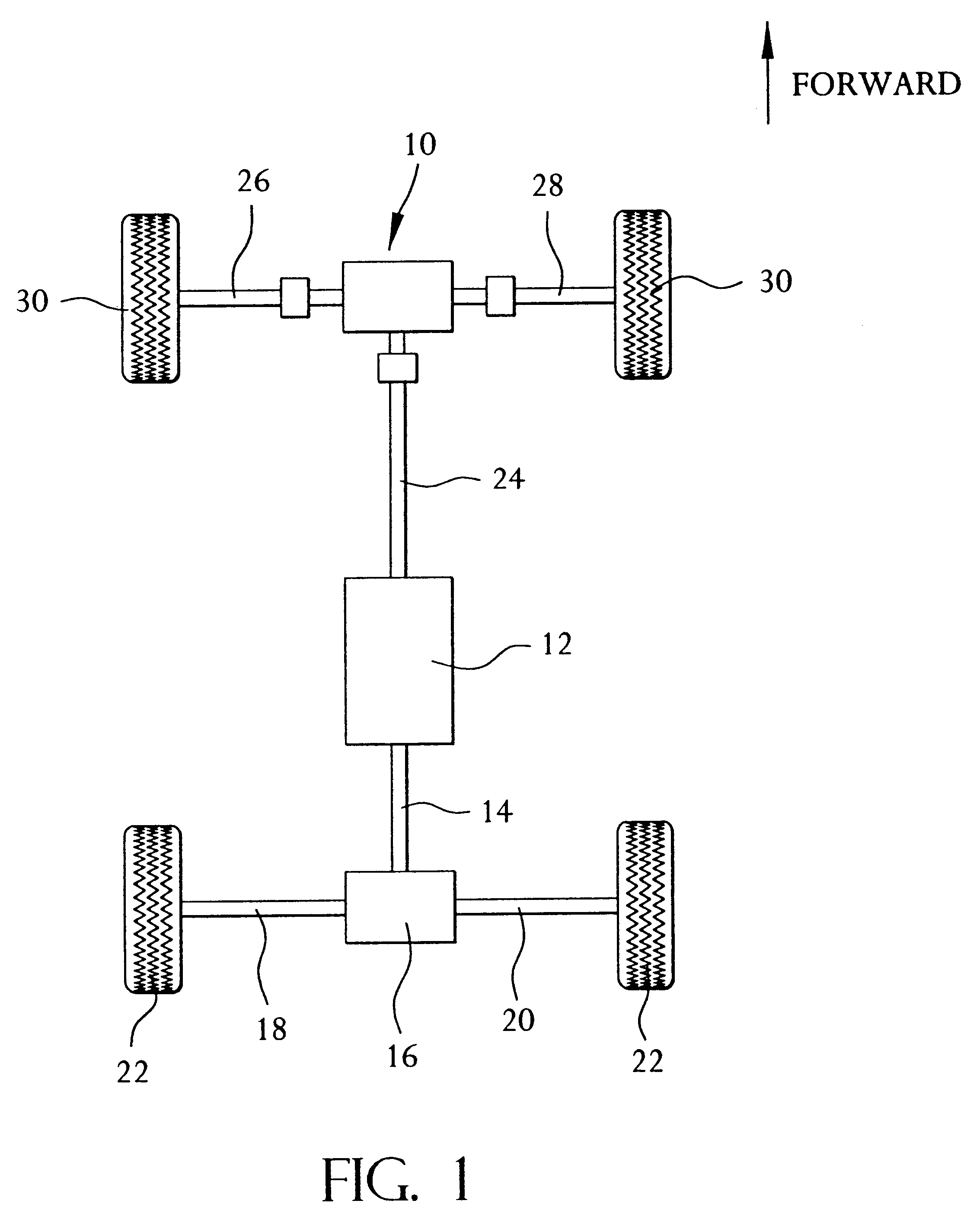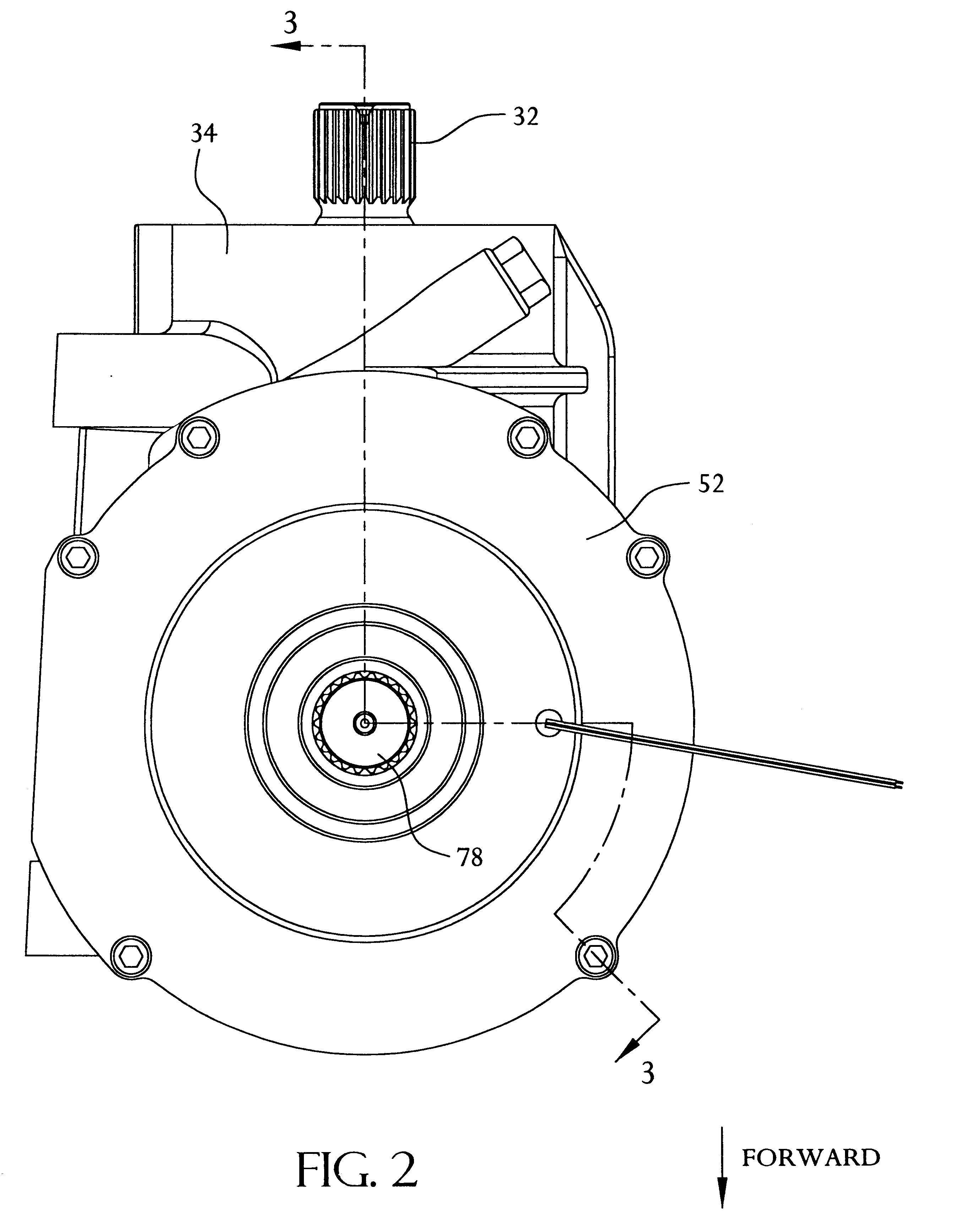Bi-directional overrunning clutch
a bi-directional, electromechanical technology, applied in the direction of fluid couplings, inter-engaging clutches, gearing, etc., can solve the problems of cumbersome vehicles, vehicle stopping, and more expensive limited slip differentials
- Summary
- Abstract
- Description
- Claims
- Application Information
AI Technical Summary
Benefits of technology
Problems solved by technology
Method used
Image
Examples
second embodiment
the invention is shown in FIGS. 7 and 8 wherein a toggle system is incorporated into the right side of the differential housing 34. In this embodiment, the tangs 114 on the first armature plate 112 do not engage with slots 116 formed in the roll cage 64. Instead, at least one, and more preferably three, toggle levers 200 which are pivotally mounted to the clutch housing 50 and engaged with the roll cage 64 for causing the roll cage 64 to advance and retard.
More particularly, each toggle lever 200 has an inner end 200.sub.A and an outer end 200.sub.B. The outer end 200.sub.B is pivotally mounted to the clutch housing 50 via a dowel pin 202. The toggle lever 200 also has a slotted opening 204 located approximately midway along its length. The slotted opening 204 is sized to slidingly engage with a protruding pin 206 which extends outward from a flange 208. The flange 208, in turn, is mounted to the roll cage 64 by pins 210. Since the flange 208 is pinned to the roll cage 64, it rotate...
PUM
 Login to View More
Login to View More Abstract
Description
Claims
Application Information
 Login to View More
Login to View More - R&D
- Intellectual Property
- Life Sciences
- Materials
- Tech Scout
- Unparalleled Data Quality
- Higher Quality Content
- 60% Fewer Hallucinations
Browse by: Latest US Patents, China's latest patents, Technical Efficacy Thesaurus, Application Domain, Technology Topic, Popular Technical Reports.
© 2025 PatSnap. All rights reserved.Legal|Privacy policy|Modern Slavery Act Transparency Statement|Sitemap|About US| Contact US: help@patsnap.com



